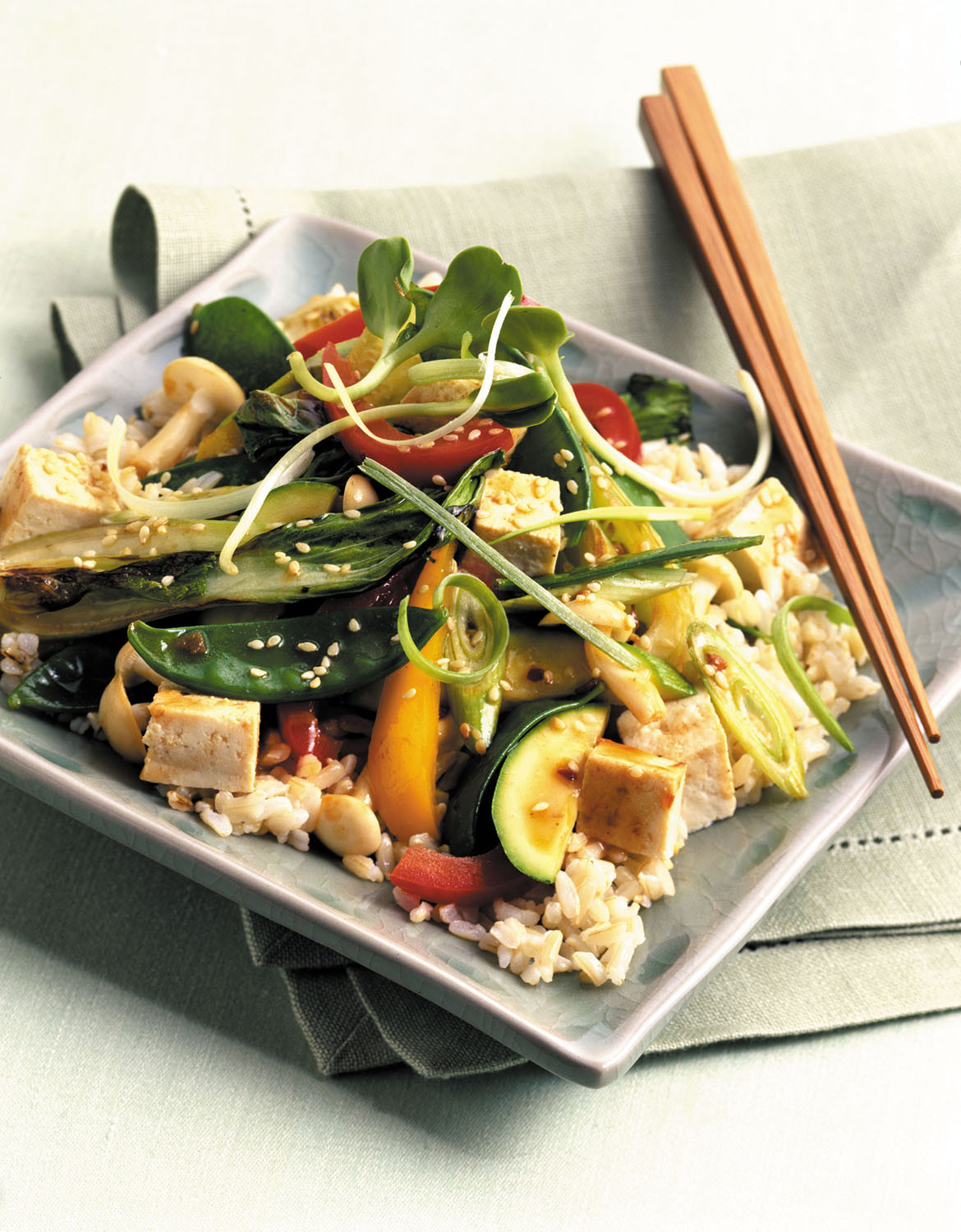Traditional Chinese diets: A template for healthy eating habits
This popular cuisine highlights foods linked to cardiovascular health, such as vegetables, soy-based foods, pungent flavorings, and tea.
- Reviewed by Christopher P. Cannon, MD, Editor in Chief, Harvard Heart Letter; Editorial Advisory Board Member, Harvard Health Publishing
 Chinese food has long ranked high on the list of Americans' favorite ethnic cuisines. Of course, restaurant offerings don't always reflect the traditional daily fare eaten in China. Some popular but less-healthful menu items — such as pork spare ribs and fried dough sticks — should be reserved for the occasional indulgence. Still, you can find lots of healthy options when dining out at a Chinese restaurant, and it's not hard to make your own healthy Chinese food at home, says Lilian Cheung, editorial director of the Nutrition Source at the Harvard T.H. Chan School of Public Health (www.hsph.harvard.edu/nutritionsource).
Chinese food has long ranked high on the list of Americans' favorite ethnic cuisines. Of course, restaurant offerings don't always reflect the traditional daily fare eaten in China. Some popular but less-healthful menu items — such as pork spare ribs and fried dough sticks — should be reserved for the occasional indulgence. Still, you can find lots of healthy options when dining out at a Chinese restaurant, and it's not hard to make your own healthy Chinese food at home, says Lilian Cheung, editorial director of the Nutrition Source at the Harvard T.H. Chan School of Public Health (www.hsph.harvard.edu/nutritionsource).
Chinese home cooking
"In general, traditional Chinese cooking has a lot of merit," says Cheung, a native of Hong Kong. Many staple foods, such as vegetables, tofu, and seafood, are all linked to a lower risk of cardiovascular disease. So are the unsaturated oils (such as canola, soy, or peanut oil) frequently used to prepare Chinese dishes.
Perhaps you're familiar with stir-fries made with broccoli or bok choy (Chinese cabbage). But you may want to branch out and use snow pea leaves (also called pea shoots), which are delicate, slightly bitter greens. Bitter melon, which looks like a long, pale-green, rough-textured cucumber, is especially rich in vitamin A, potassium, and folate, says Cheung. You can find these vegetables in large Asian groceries.
Asian supermarkets also often have a large selection of whole fish, such as hake, grouper, or sea bass, which are often prepared steamed with ginger and scallions. Shellfish such as shrimp, clams, and mussels are good sources of protein and other nutrients; they're usually steamed or stir-fried, either alone or with vegetables. Shellfish are also far more environmentally friendly to farm than other animal-based protein sources such as beef, pork, and poultry.
Soybean curd (tofu) is another healthy, versatile protein common in the Chinese diet. Cheung likes to stir-fry soft tofu with green onions (scallions) and a little bit of oyster sauce and top it with a few drops of toasted sesame oil. "It takes just five minutes to make and is my favorite fast food," she says.
Healthy swaps and additions
Although white rice is embedded in Asian culture, nutrition experts urge people to opt for brown rice instead. Not only does brown rice offer more fiber and other nutrients, it's less likely than white rice to make blood sugar levels spike. Many Chinese restaurants now offer brown rice as an option on their menus, says Cheung.
Chinese cooking relies on soy sauce and other savory sauces (black bean, hoisin, and oyster), all of which are quite high in sodium. People with high blood pressure — about half of all Americans — should be careful not to consume too much sodium, which tends to raise blood pressure. When dining out at a Chinese restaurant, request that your food be prepared without monosodium glutamate (MSG), a flavor enhancer that also contains sodium, Cheung suggests.
For home cooking, you can buy soy sauce with 37% less sodium, which is marketed as "less sodium soy sauce." Adding a little lemon juice or vinegar allows you to use less soy sauce without sacrificing flavor. Also, aromatic roots like onions, garlic, and ginger can lend extra flavor to food.
Chili peppers, another classic ingredient in Chinese cooking, may also offer health benefits. Capsaicin, the chemical responsible for the spicy-hot flavor in chili peppers, may alter how the brain processes salty flavors, leading to lower sodium intake. Don't care for spicy food? You might enjoy the sweet but intense flavor of Chinese five-spice blend, which is a mix of star anise, fennel, Sichuan pepper, cinnamon, and cloves.
Drinks and desserts
In China, similar to many cultures throughout the world, tea is the beverage of choice. Both green and black tea are rich in compounds called flavonoids that help dampen inflammation, a culprit in heart disease. Tea drinking has also been linked to lower cholesterol and improved blood vessel function.
In China, fruit — especially sliced oranges — is a customary dessert. If you'd like to try something more exotic, seek out lychees, which are golf ball–sized tropical fruits native to Southern China. Also known as alligator strawberry, the fruit has a rough, pinkish-red skin and white flesh with a sweet, slightly floral flavor.
About the Author

Julie Corliss, Executive Editor, Harvard Heart Letter
About the Reviewer

Christopher P. Cannon, MD, Editor in Chief, Harvard Heart Letter; Editorial Advisory Board Member, Harvard Health Publishing
Disclaimer:
As a service to our readers, Harvard Health Publishing provides access to our library of archived content. Please note the date of last review or update on all articles.
No content on this site, regardless of date, should ever be used as a substitute for direct medical advice from your doctor or other qualified clinician.
















